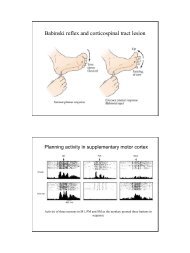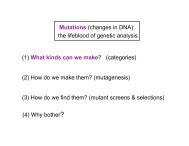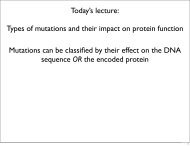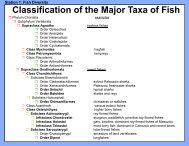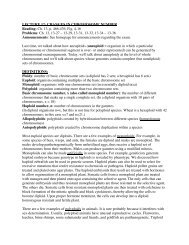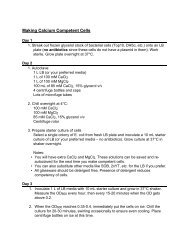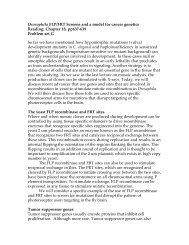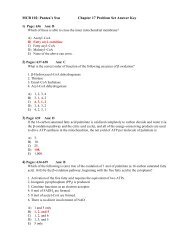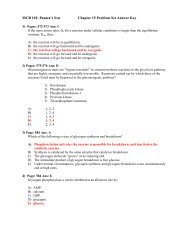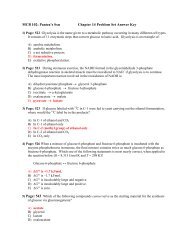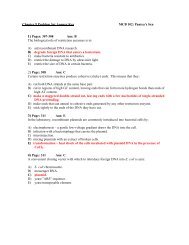MCB 102: Pantea's Sxn - Molecular and Cell Biology
MCB 102: Pantea's Sxn - Molecular and Cell Biology
MCB 102: Pantea's Sxn - Molecular and Cell Biology
Create successful ePaper yourself
Turn your PDF publications into a flip-book with our unique Google optimized e-Paper software.
6) Page: 780 Ans: E<br />
Which one of the following reactions, cycles, or pathways is not found in plant systems?<br />
A) The Calvin cycle<br />
B) The gluconeogenesis pathway<br />
C) The glyoxalate cycle<br />
D) The rubisco reaction<br />
E) The urea cycle<br />
7) Page: 754<br />
Show the reaction catalyzed by ribulose 1,5-bisphosphate carboxylase/oxygenase (rubisco).<br />
Ans: Ribulose 1,5-bisphosphate + CO 2 2 (3-phosphoglycerate)<br />
(For the details of the reaction, see Fig. 20-7, p. 756.)<br />
8) Page: 762<br />
Explain why both ATP <strong>and</strong> NADPH are required for the operation of the Calvin cycle, <strong>and</strong><br />
why these two reactants are required in different amounts.<br />
Ans: ATP is required in two reactions of the Calvin cycle: the formation of 1,3bisphosphoglycerate<br />
from 3-phosphoglycerate (2 ATP per CO2 fixed) <strong>and</strong> the conversion of<br />
ribulose 5-phosphate into ribulose 1,5-bisphosphate (1 ATP per CO2 fixed). NADPH is<br />
required in the reduction of 1,3-bisphosphoglycerate to glyceraldehyde 3-phosphate (2<br />
NADPH per CO2 fixed). Thus the operation of the cycle consumes 3 ATP <strong>and</strong> 2 NADPH per<br />
CO2 fixed. (See Fig. 20-14, p. 762.)<br />
9) Page: 767<br />
Describe the reaction sequence by which 2-phosphoglycolate (produced when O2 replaces<br />
CO2 as substrate for rubisco) is converted to serine. Name each enzyme <strong>and</strong> any cofactors<br />
required <strong>and</strong> indicate the subcellular compartment in which the reaction takes place.<br />
Ans: 2-phosphoglycolate is converted to glycolate by a phosphatase in the chloroplast.<br />
Glycolate is transported to the peroxisome <strong>and</strong> converted to glyoxylate by glycolate oxidase.<br />
The glyoxylate is then converted in the peroxisome to glycine by a transaminase that requires<br />
pyridoxal phosphate. Finally, two molecules of glycine are converted to serine + NH3 + CO2<br />
by the enzyme glycine decarboxylase, which is located in the mitochondrion.<br />
10) Page: 764<br />
How does glyceraldehyde 3-phosphate formed in the chloroplast stroma by the Calvin cycle<br />
reactions enter the cytosol?<br />
Ans: It is converted to dihydroxyacetone phosphate or to 3-phosphoglycerate <strong>and</strong> carried into<br />
the cytosol by the Pi-triose phosphate antiporter, a specific transporter in the inner<br />
chloroplast membrane. (See Fig. 20-16, p. 764.)



